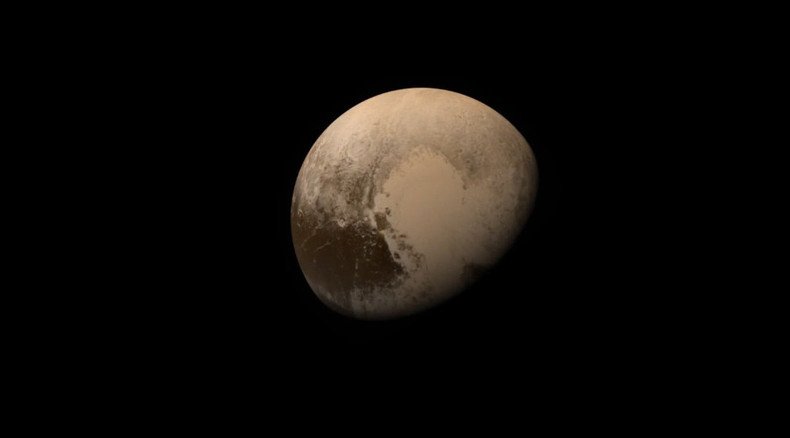Amazing video shows journey to Pluto through lens of NASA New Horizons spacecraft

Over a month after NASA's New Horizons spacecraft flew past Pluto, a breathtaking animation video of the historic flyby has been created. The footage compresses two hours of travel time into 16 beautiful seconds.
The video, released on Vimeo by user Bjorn Jonsson, is an animated visualization using photos taken by New Horizons as it approached and passed Pluto, while traveling at a speed of 30,800 mph (almost 50,000 kph).
According to Jonsson, the animated visualization covers the time between 9:35am and 13:35pm, with the closest approach (7,750 miles from the dwarf planet) happening at 11:50am.
“Pluto’s atmosphere is included and should be fairly realistic from about 10 seconds into the animation and to the end. Earlier it is largely just guesswork that can be improved in the future once all data has been downlinked from the spacecraft,” Jonsson wrote on Vimeo.
“Pluto's satellite Charon illuminates Pluto’s night side but is exaggerated here, in reality it would be only barely visible or not visible at all," he added.
Cosmic chaos: Pluto's moons drunkenly dance around dwarf planet, study says http://t.co/gpNk3hsvWDpic.twitter.com/VXdwszTbhV
— RT (@RT_com) June 5, 2015New Horizons finally completed its flyby in July, taking 3,463 days to travel 2.97 billion miles to arrive at its destination.
The spacecraft has so far sent back detailed photos of Pluto, revealing that the dwarf planet is home to mountains and canyons. It has also shown that Pluto's satellite, Charon, is more cratered than the dwarf planet itself.
Images released later revealed more details about the dwarf planet's moons, while photos at the end of last month amazed scientists after showing an incredibly hazy atmosphere and ice flowing on Pluto's surface.
New Horizons still has most of its data on board, and will be sending images back to Earth over the next 16 months.
New Horizons, which has been described as resembling a foil-covered grand piano, is 27 inches (70cm) tall, 83 inches (2.1 meters) long, and 108 inches (2.7 meters) wide. It weighed 1,054lb (478kg) at launch.












